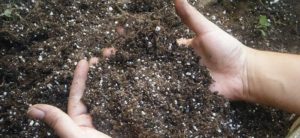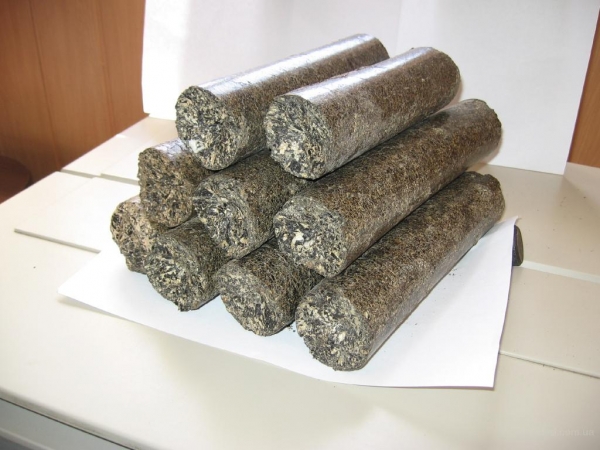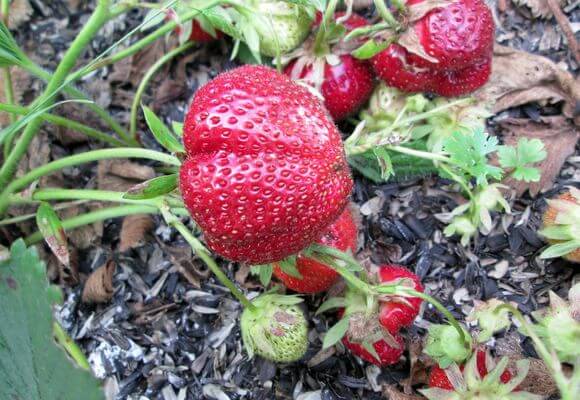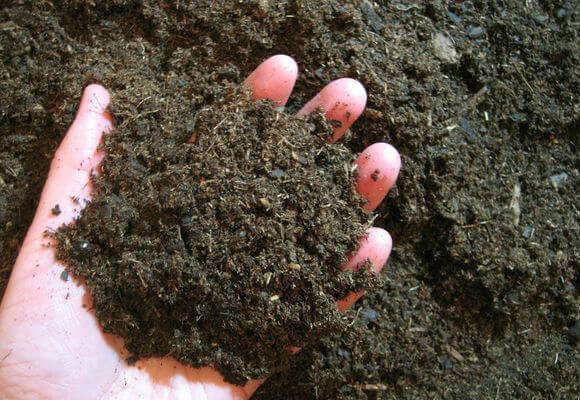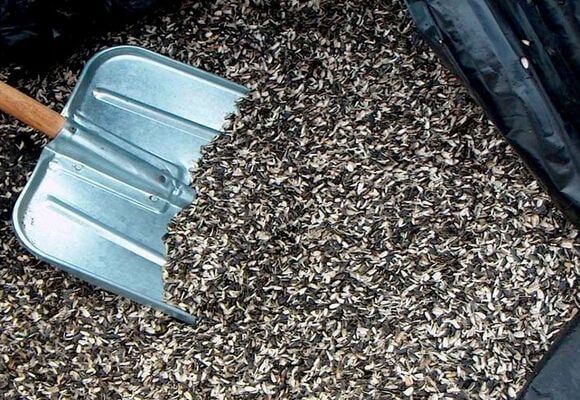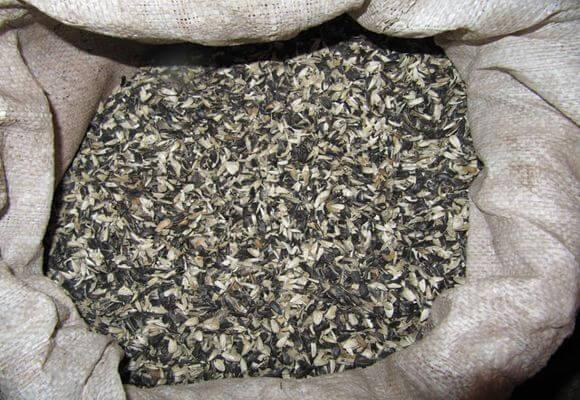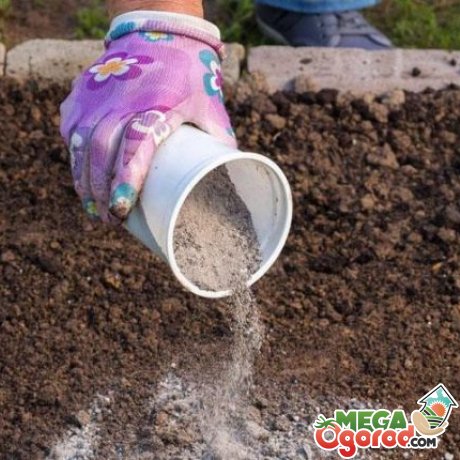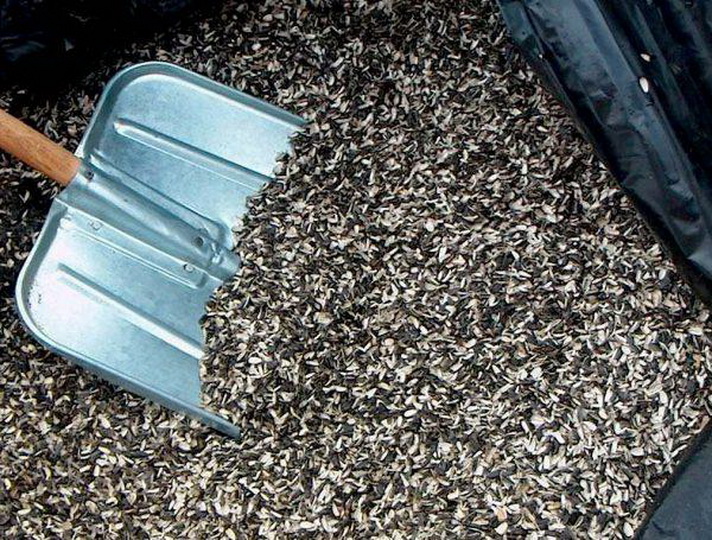Sunflower husk as mulching material
The husk, like sawdust, consists of cellulose, so it is advisable to use it as a mulch layer. But there are certain problems with this as well. If you put it on the soil, even with the thickest layer, then it will scatter quite calmly throughout the garden from the slightest breath of wind, because the husk is very light. Yes, and watering with more or less good pressure can do the same, so it’s worth mixing it with something or on top of a layer of husk, laying another layer, say straw. Isn't it easier to put down the straw right away and calm down. But on the other hand, if you make this two-layer mulch, then weeds will not break through it, and the soil will not lose its nitrogen balance, and moisture will remain in the soil for a long time. The peel will lie in mulch until the very end of the summer season, and then it can be removed to the compost heap, where it will continue its life.
The best use of husks as a mulching layer is in closed greenhouses and greenhouses, where there is no such revelry of wind, and watering is not done with a hose, but under the root with a watering can or drip method. In this case, both the mulch is in place and the moisture is preserved, and over time, the soil layer will improve due to the rotted peel. But, and in frequent plantings, this can also be done, for example: under cabbage, strawberries, potatoes.
The combination of peel from seeds with pine or deciduous needles will be effective. Displace all these dry elements: peel, needles, small sawdust, and make a kind of universal mulching material that can be used to cover tree trunks of fruit trees, bushes for the winter, cover rose bushes with such a layer, and other plants that need winter shelter. And in the spring, dig up these places, and thereby perfectly nourish the soil.
Using seed husks in the garden
Husks from seeds as fertilizer in the garden, photo and video
It is best to compost sunflower husks in a separate bed or use a small box. Since the peels take a very long time to decompose, it is better to wait until the compost from them fully matures and turns into organic matter.
So that the fertilizer is not poor in nitrogen, it must be mixed with fresh manure rich in this element. You can add seed waste to the holes when planting potatoes, tomatoes, trees and shrubs.
The seed husk will decompose for a long time, but it will improve the granulometric composition of the soil, increase its water and air permeability.
Mulching
Seed husks work best as mulch. Since the bacteria that decompose cellulose live in the soil, and decomposing it on the surface, the husk will not decompose.
So, there will be no nitrogen deficiency in the soil. To do this, it is scattered with a layer of about 2-3 cm on the beds. Weeds will not break through such a mulch, and incoming moisture will linger in the soil and evaporate more slowly. In addition, after heavy rain, the beds do not wash out.
But such a mulching layer has one drawback. If you water the beds with a hose, then the water pressure breaks the mulch layer. Therefore, it is best to lay a layer of straw on top of the husk. He will allow her not to scatter when watering.
Also, with this product, you can fill up the paths between the beds, it will be good to walk along them even after rain.
The husks from the seeds are collected at any time. Before putting it away for storage, the husk is dried and packed in paper or rag bags. Despite the fact that the seed husks take a long time to decompose, it will still benefit the garden, and the bin will fill up more slowly if food waste is used.
Answersmail. en how in gardening you can use seed husks and egg shells
Replies@mail.
en: How can seed husks and egg shells be used in gardening? Categories All project questions Computers, Internet Topics for adults Auto, Moto Beauty and Health Goods and Services Business, Finance Science, Technology, Languages Philosophy, Unknown Cities and Countries Education Photography, filming Horoscopes, Magic, Divination Society, Politics, Media Legal advice Leisure , Entertainment Travel, Tourism Humor Food, Cooking Jobs, Careers About projects Mail. Ru Animals, Plants Family, Home, Children Other Dating, Love, Relationships Sports Gold Fund Art and Culture Style, Fashion, Stars See full list Ask Leaders Search by questions
Using sunflower seed husks as mulch
Using sunflower seed husks as mulch April 12, 2013
On the advice of friends, I am going to use sunflower seed husks as mulch. Advise where you can learn more about this type of mulch and how to use it.
Information about the use of sunflower husks as a mulch is very contradictory. In particular, B. A. Bublik in his books does not recommend using it for mulching.
I have no experience with sunflower husks. But I think if you mix the husks with nitrogen-containing plant residues (freshly cut grass, weeded weeds, chopped nettles, leftovers from the preparation of herbal infusion, and the like), then it is quite possible to use it as a mulch.
If there are still doubts, then the husks can be pre-composted by mixing with other plant residues.
It is very good if the preparation "Siyanie-3" is used for composting, which is specially designed to accelerate the decomposition of coarse organic matter.
In addition, the waste products of microorganisms that are contained in this preparation neutralize those harmful secretions that may be contained in the husk. Just do not wait for complete decomposition, 1.5-2 months is enough.
By the way, sunflower husks are great for growing mushrooms (oyster mushrooms, shiitake mushrooms, mushrooms). As you know, the enzymes secreted by fungi are capable of decomposing very coarse organic matter such as wood. So you can not only get material for mulch, but also diversify your table in addition. But in any case, if you are using a new material for yourself, test it on a small area.
Ildus Khannanov, Ufa
Benefit or harm
There are not so many nutrients in sunflower husks. And in its structure, the husk is similar to
- sawdust and shavings,
- buckwheat peel,
- tree bark and birch bark,
- shells from the processing of hazelnuts,
- eggshell,
- straw.
The main component of sunflower shells is cellulose. It decomposes in the soil for a long time, while drawing out a sufficient amount of nitrogen, which is so necessary for the development of plants. This is the only minus of the husk. However, experienced gardeners still use it as
- fertilizer,
- mulch,
- loosening material,
- drainage,
- to regulate soil acidity.
Characteristics of husk pellets
Name of indicator Actual value Unit of measurement Heat transfer 4142/5252 kcal/kg Gross calorific value 21.99 kJ/kg Net calorific value 17.34 kJ/kg diameter) 5-12 mm Size of granules (length) 50 mm Smell characteristic of sunflower husk —
Not so long ago, private individuals and industrial enterprises have chosen pellet as a solid fuel. But even in such a short time, the product managed to earn huge popularity and more and more people began to use it. According to statistics, the demand for alternative fuel is growing every year and is about 30%.For example, the Swedish government has created a program that provides for an increase in the use of fuel pellets at least 7 million tons annually, in the UK this number is no more than 600 thousand tons.
Thanks to the analysis of various offers in the global network, it can be seen that wood pellets, for example, in Poland are about 110 euros per ton of material, and sunflower husks are five euros cheaper. Of course, such prices are hard to consider low. But since the tariffs for gas, oil, and electricity are constantly growing, for many countries, pellets will become a wonderful replacement, so the demand for them will rise.
What are the benefits of husk pellets?
Husk pellet consumers have opted for this alternative fuel because of its many advantages compared to traditional energy resources. Firstly, the material is environmentally friendly, as it does not contain chemicals, spores and plant seeds that cause allergies. Secondly, the use of pellets is economical, as their cost is affordable. Thirdly, they are functional, having low biochemical activity, they can be stored without observing special conditions, transportation of fuel is convenient due to standard sizes and flowability.
Flaws
As mentioned above, pellets from sunflower husks have a fairly high percentage of ash. therefore, they are recommended for use in industrial boilers. There is a myth that they have a very detrimental effect on solid fuel boilers and chimney systems, this is not so. Such problems can only arise in incorrectly calculated systems where the diameter of the chimney is significantly narrowed or its system itself has sharp turns or loose pipe connections, which reduces draft. In such cases, ash deposition will be higher than normal, but this will occur with any solid fuel.
SUNFLOWER PUSH AS A RENEWABLE ENERGY SOURCE
SUNFLOWER PUSH AS A RENEWABLE ENERGY SOURCE
LEGISLATED BY REGULATIONS
Head industrial sector. safety and labor protection, Ph.D. Barmashev V.A. ,
head Department of Production of Vegetable Oils, Ph.D. V.N. Markov,
head Department of Standardization F.P. Nosovitskaya
VNIIZH, St. Petersburg
Tel.: (812) 712-05-37 F.P. Nosovitskaya
Currently, there is an increased interest in the use of renewable energy sources around the world. The program of the European Community has set a goal to triple the production of energy from renewable sources of fuel of biological origin over the next ten years. In Western Europe, as well as in some CIS countries, programs have already been adopted and approved at the legislative level, which oblige them to generate at least a quarter of all required energy using renewable sources.
Fuel from wood waste in the form of bark, chips and sawdust, as well as buckwheat and sunflower husks, corn cobs, straw, etc. are used as alternatives to fossil fuels. First of all, this is due to the need to protect the environment, as well as the trend of transition to energy-saving and resource-saving technologies. In this report, we will talk about the use of sunflower husks as an alternative fuel. This type of fuel can be used for boiler houses and thermal power plants, in stoves and fireplaces, for the production of heat and electricity, for heating industrial, domestic and residential premises.
In fact, the burning of husks as an alternative fuel at the enterprises of the oil and fat industry in Russia takes as long as the industry itself exists.
The calorific value of 1 ton of dry matter of sunflower husks is equivalent to 17.2 MJ.According to this indicator, husk exceeds firewood - 14.6-15.9 MJ / kg and brown coal - 12.5 MJ / kg., And the coefficient of conversion of husk into equivalent fuel reaches 0.63 units.
When burning husks, the amount of carbon dioxide released does not exceed that formed during the natural decomposition of wood, and the amount of other harmful emissions is negligible. The ash from the burning of the husk can be used as a fertilizer.
Due to the low bulk density of the original husk, its transportation to other facilities is not economically efficient. A number of enterprises in the industry have begun work on briquetting and granulation of husks, and fuel pellets are supplied not only to the domestic, but also to the foreign market. During granulation, the initial material is compacted by 5-10 times. Granular fuel also has a number of advantages, among which we should note the constancy of quality characteristics, ease of storage, and the possibility of using in systems with automatic fuel supply. As a result, the issue of not only the stability of energy supply is being solved, but also the problem of environmentally friendly disposal of production waste.
The absence of an industry regulatory document providing for the use of sunflower husks as a fuel made it difficult to promote it to the market as a commodity. In accordance with the federal law "On the Protection of Atmospheric Air" (Article 15, Clause 3.5 and Clause 7, Article 18), there was a question about the eligibility of its use as a fuel, and its actual combustion as a method of disposal.
At the request of a number of oil and fat enterprises in Russia, VNIIZH and TK 238 "Vegetable oils and products of their processing" developed TU 9147-468-00334534-2007 "Sunflower husk for technical purposes".
The developed specifications provide for the production of sunflower husks of three types: non-granulated, granulated and briquetted. The complex of normalized physical and chemical indicators laid down in the specifications allows the use of husks both as a fuel and for other purposes, for example, as a fertilizer and improver of soil properties. The "Safety Requirements" section provides data on the hazard class and ignition temperature of the husk, as well as the maximum permissible concentration of sunflower husk aerosol in the air of the working area. Annexes to the TS contain information on the average component composition of the ash obtained after the combustion of sunflower husks and data for calculating the SHEV of sunflower husk ash dust in the atmospheric air.
The developed technical specifications transform the husk into a commercial product, the cost of which is determined by market relations.
What is used for
The use of seed husks in the garden is quite extensive. This material has not yet become traditional in agriculture due to the rarity of the offer on sale. But like any organic residue, it can perform a number of important tasks in the garden.
Mulch
Sunflower seed rinds, like buckwheat husks, make a great organic mulch. Under it, moisture is stored for a whole week, a dense peel delays evaporation. But such dignity becomes an obstacle when watering. To wet a continuous layer of peel, you need more water. An excellent solution would be a drip irrigation device.
It is enough to lay a layer 2-3 cm thick to suppress the growth of weeds. You can even walk on dense mulch from seed husks without fear of trampling the ground. A thicker layer on the garden paths allows you to safely move along it even after rain. The ground under the husk warms up more than usual, which ensures the dryness of the tracks.
By spring, it is no longer possible to find the husk in the garden where it was used.
In addition to the garden, organic mulch is successfully used in the garden to cover the near-stem circles of fruit shrubs and trees.But for the winter it must be collected and sent to the compost heap, otherwise the smell of seeds will attract a large number of rodents.
The disadvantage of such a shelter can be called the light weight of the husk, which is why it is easily carried around the garden even by a weak wind or a large pressure of water during irrigation. In addition, birds and rodents continue to search for food in plant debris. Therefore, a layer of mulch must be sprinkled on top with earth, peat, humus, straw.
top dressing
Seed husk bags are used to grow oyster mushrooms. Judging by the growth rate and healthy appearance, this substrate has undoubted advantages as a non-aggressive top dressing.
In its pure form, the use of husks to fertilize the earth is rarely used. However, farmers who were lucky enough to get whole machines from the production of husks plow it in the fields every year. In the soil, the number of pathogenic fungal infections is reduced.
In addition to direct use, the peel of seeds can be burned and wood ash can be obtained, which is an excellent potash fertilizer. It gently lowers the acidity of the soil, nourishes the plants with essential minerals and protects them from the invasion of insect pests.
Compost
The composition of sunflower husks is close to other organic residues - sawdust, tree bark, pine nut shells. To make high-quality compost from cellulose, it is necessary to pour fresh manure or bird droppings into a pile.
Such an additive should make up for the main flaw of the substrate - the lack of nitrogen. The received fertilizer does not contain the remains of a peel. Ripened compost has a pleasant smell of fresh earth and a homogeneous composition.
Baking powder
Farmers take the husks from factories that produce vegetable sunflower oil from seeds and plow it in the fields. With regular use of this material, the earth becomes soft and loose, does not form a dense crust after rain or watering.
Important! As a baking powder, the husk is much more effective than the usual sand. They are brought in for digging, while it is well embedded in the soil and evenly mixed.
The effect is noticeable for three years
They are brought in for digging, while it is well embedded in the soil and evenly mixed. The effect is noticeable for three years.
When planting tomatoes, potatoes, eggplants, put a handful of husks in the holes. Close it under the seedlings of shrubs and trees, because the husk provides the flowability of the soil, which is necessary for the access of oxygen to the roots of plants.
Drainage
When sowing seeds for seedlings, husks are added to the purchased soil to give it additional water permeability and aeration. Of course, the husk gradually decomposes in the ground. But seedlings grow only 30-50 days and during this time the peel does not have time to lose volume and be completely processed by microorganisms.
Videos with various ways to use the husk in gardening or vegetable beds will help you achieve the maximum effect.
Latest announcements
-
Gas boiler Protherm (Proterm) Bear 20 klom
Brand new in box, all sealed, check warranty dated 09/01/19. I am selling because it did not fit our old system, but to return ...
- Region: Moscow region
-
11.09.19
-
Water-heating gas boiler VK-21 (KSVa-2.0 GS)
We offer a steel water-heating boiler KSVa-2.0 Gs (VK-21). For a wholesale order (from 2 boilers) a price discount is possible
A type …- Region: Kirov region
-
05.08.19
-
Steamer KV-300
We offer steam boiler KV-300(KP-300).
Steam capacity for normal steam, kg / hour - 300;
- allowable excess ...- Region: Kirov region
-
28.06.19
-
Steam generator for 500 kg of steam
Specifications:
— steam capacity — 500 kg/h;
– type of boiler – two-way, fire-tube with reversible…- Region: Kirov region
-
28.06.19
-
Steam generator for 1600 kg of steam
Specifications:
— steam capacity — 1600 kg/h;
– type of boiler – two-way, fire-tube with reversible…- Region: Kirov region
-
28.06.19
-
Hot water boiler KSV-0.63
We offer a hot water boiler KSV-0.63.
Technical data and characteristics:
- nominal heat output, ...- Region: Kirov region
-
28.06.19
-
Hot water boiler 850 kW gas diesel
Specifications:
- nominal heat output - 0.85 MW;
- efficiency - 92%;
– boiler type – two-way, …- Region: Kirov region
-
28.06.19
-
Automatic coal boilers Lugaterm
The boiler model combines three main parts: a water-cooled firebox, a heat exchanger with an automatic mechanical …
- Region: Moscow
-
15.03.19
-
WATER HOT SOLID FUEL BOILERS ON THE KVR MINE
Type of fuel: firewood of any humidity
Power from 0.2 to 2.5 MW
Purpose: obtaining hot water with a nominal temperature ...- Region: Kirov region
-
05.02.19
-
WATER HEATING BOILERS FOR WORKING ON WASTE OF WOOD PROCESSING AND SAWING KVM
Type of fuel: woodworking waste (sawdust, wood chips, bark) – without humidity limitation
Power: 0.2 to 2.5 MW
Purpose:…- Region: Kirov region
-
05.02.19
Announcements by topic:
- Boilers and equipment for boiler rooms
- cooling towers
- Heating networks (all about pipelines)
- materials
- Water treatment
- cogeneration
- Autonomous heat supply
- Pumps, fans, smoke exhausters
- Pipeline accessories
- Heat exchange equipment
- Metering devices
- I&C
- Repair Equipment
- Heating appliances
Husk properties
In Russia, popping sunflower seeds is very popular, using sunflower and pumpkin seeds. On sale, the quantity of the latter is small, and the price is rather big. Therefore, wide use as a natural component in the garden is possible only for sunflower peel.
The outer shell of the seeds is a hard black cover, under which a white nucleolus is hidden. It accounts for approximately 17% of the total weight. The main material (more than 50%) of which the husk consists is cellulose or crude fiber. It also includes total nitrogen, fat, wax, ash substances, mono- and polysaccharides.
In large quantities, husks as production waste are produced when oil is obtained from sunflower in factories or farms. But it does not go to retail in Russia, it is burned in boiler houses and taken to a landfill. That is, the substance is practically free, but, despite the benefits, it is not sold to private individuals.
Sales of sunflower, buckwheat, oatmeal and rice husks are carried out in bulk for the production of animal feed, bricks, and fuel pellets.
Sometimes you can arrange to pick up seed dust from mushroom farms for free after harvest. There, the husk is used as a filler for mycelium blocks.
If you are lucky enough to get a large amount of substrate for use in the garden, then you need to store it in a cold place: a barn, a cellar.
Important! Organic waste can harbor mice, moths or mold
When can husks be used as fertilizer?
The ash obtained from the burning of sunflower husks is useful for almost all vegetables. Before plowing the fields, they bring in three kilograms of ash per ten square meters. For tomatoes, peppers and eggplants, a kilogram will be enough. Before planting legumes, beets, radishes per square meter, 250 grams of ash is applied, and for cabbage and garlic - 500 grams per square meter.
After that, the beds are dug up. When planting tomato seedlings, a handful of sunflower husk ash is added to each well. Useful natural fertilizer for grapes. It is added to the pits when planting berries, used as top dressing during the growing season at 250 grams per square meter.
If you need to get rid of caterpillars on cabbage, aphids on bushes, then a glass of ash is poured with ten liters of water, insisted for ten hours and sprayed on the plants in the early morning. And the larvae of the Colorado potato beetle will disappear if they are sprinkled with dry ash. Slugs also do not like this tool.Sunflower ash is one of the sources of potassium. It is actively used as a fertilizer.
What are the properties of sunflower husks
The husk is not a waste, but a valuable resource of sunflower crops, which is effectively used in the garden. Due to the presence of valuable components, the husk of sunflower seeds increases the quality of the crop. According to the characteristics, it resembles:
- sawdust and wood shavings;
- tree bark;
- buckwheat peel;
- birch bark;
- husk of wheat;
- nut processing products.
The main component of the material is cellulose, so it is suitable for mulching. Gardeners use organic waste to saturate the soil with useful elements and protect the planting from parasites. Studies have shown that the use of sunflower seed peel increases the yield by 20%, so sunflower husks as a fertilizer are often used in household plots.
Cellulose takes several years to decompose. During the period of complete decay, it is able to extract nitrogen compounds from the soil. Efficiency is increased by combining the material with manure, because the latter contains nitrogen in large quantities. This is a great option for fertilizing the land.
